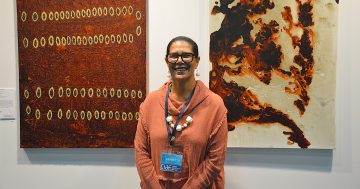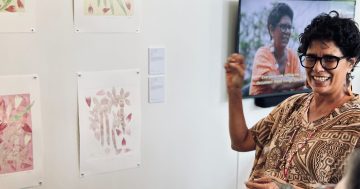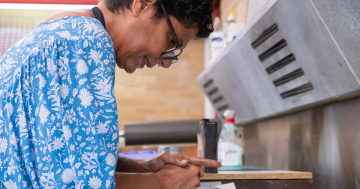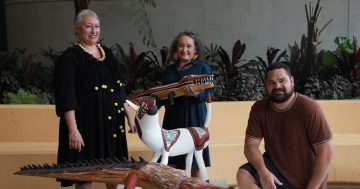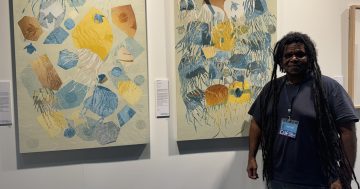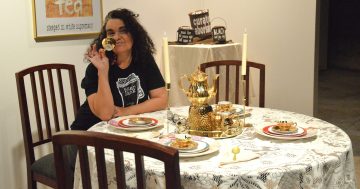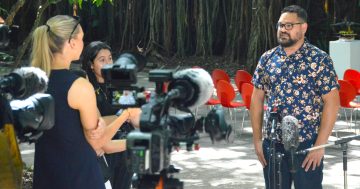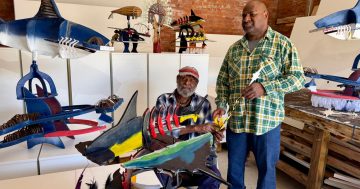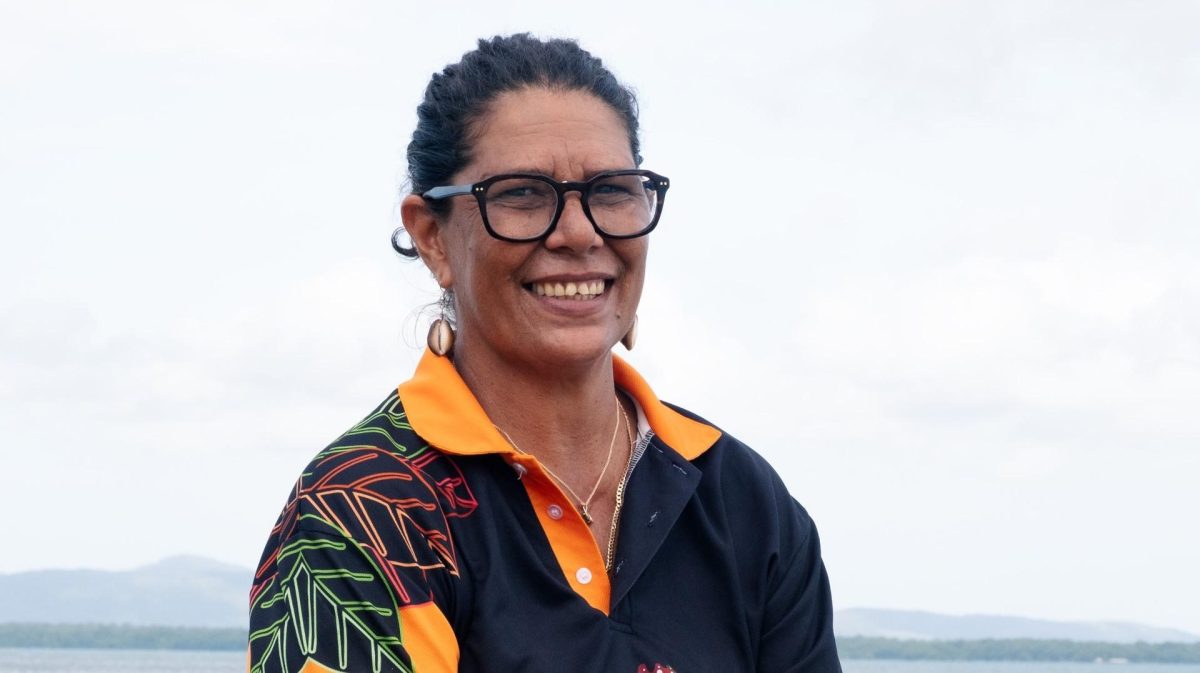
Independent artist Matilda Nona will have the chance to take her art to the next level through an accelerator program offered by the Cairns Indigenous Art Fair. Photo: supplied.
The future looks bright for talented Badu Island artist Matilda Nona, who was chosen as the inaugural recipient of CATAPULT, an innovative professional development and showcase program developed by the Cairns Indigenous Art Fair (CIAF) ahead of this year’s showcase event.
Ms Nona explores maternal themes and First Nations women practices in her art, with mediums ranging from printmaking to traditional rock painting.
“It all started when I was working at the art centre as a cleaner,” she said.
“Most of the artists were males, so they were all doing fishes and warrior stuff, and then the boys asked me if I got any interest in art, and asked if I want to have a go with lino printing.
“I didn’t want to do what they were doing, so I thought I could do women’s business, flora and fauna stuff and bush medicine, and it just went from there.”
She said she was ecstatic to be the first CATAPULT recipient, adding that her plan was to explore more art mediums.
“I’m over the moon, and I still can’t get my head around it,” she said.
“I’ll get all this training and opportunities to work with the mentors, so it’s going to take my practice to a more professional level, and I’ll get to play with other mediums.”
CIAF’s artistic director Francoise Lane said CATAPULT was an exciting addition to the organisation’s strategic programming and formed part of an ambitious four-year plan that would enrich Queensland’s First Nations arts movement by boosting the numbers of talented, independent artists.
“CATAPULT is what its name implies, a platform for independent artists to leverage a range of opportunities,” Ms Lane explained.
Ms Lane said the program comprised two streams.
The first, of which Ms Nona was the recipient, has a focus on career development, while the second will provide a showcase opportunity for independent artists to exhibit at CIAF.
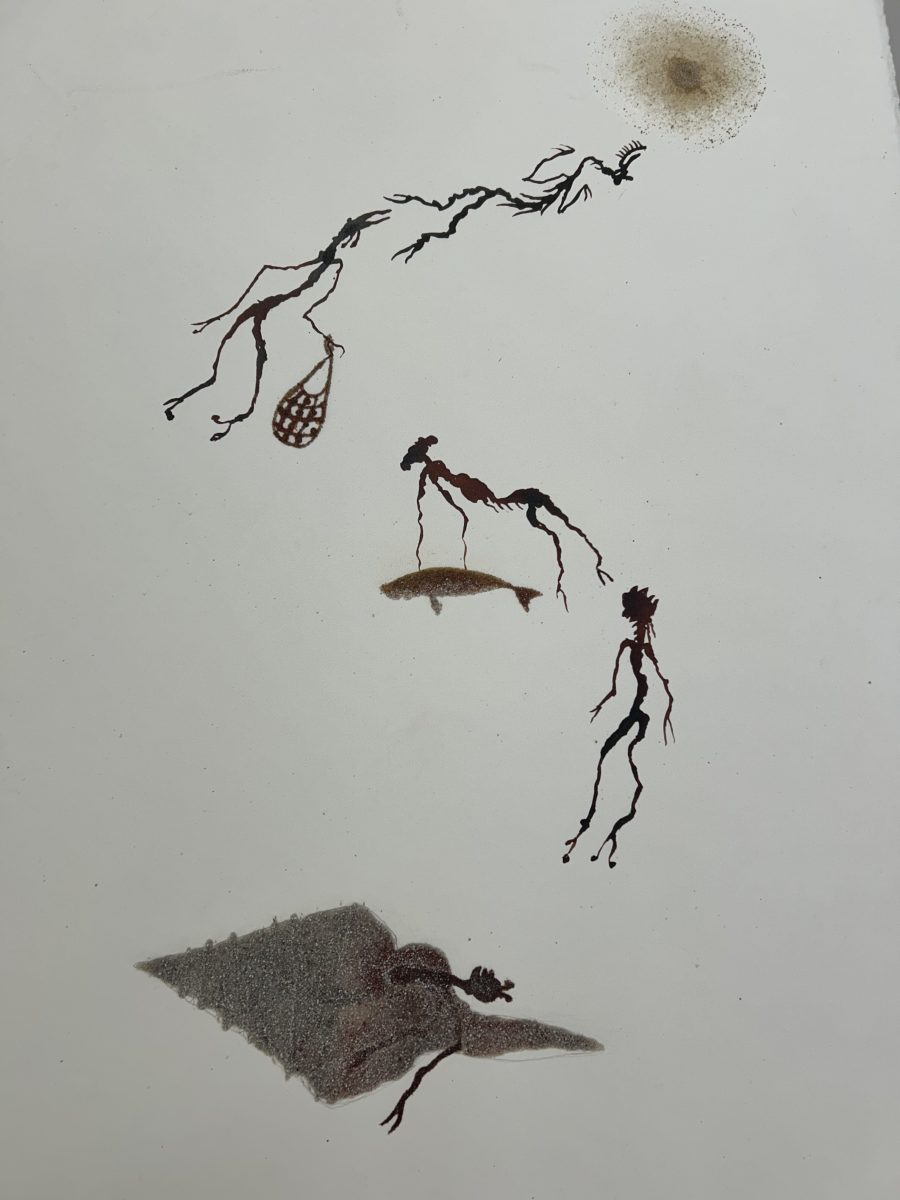
Ms Nona explores woman’s traditions and roles in First Nations culture. Photo: supplied.
Ms Nona said living in a remote area, chances like this one rarely came along.
“In remote communities, there’s so many barriers, and this is like a once in a lifetime opportunity to work with people like that, and showcase our work and our talents,” she said.
“There’s things like language barriers, and a lot of the opportunities are only in the mainland, and doesn’t come further out to more remote places.”
The artist also said it was a challenge to get supplies to the Torres Strait, which inspired her to go back to traditional mediums using the land.
“You can buy things online, but then trying to get it shipped up home, it’s gonna cost you and arm and a leg,” Ms Nona said.
“I’ve been going back to the old ways now, because I got the drive to do artwork, but the logistics gets in the way.
“That kind of inspired me into going back and start looking in my own backyard, and creating things from ochres and plants and rocks.”
Ms Nona said the practice of using natural resources was fairly new to her and had fit in well with her first love, printmaking.
“The natural stuff’s only come in the last two or three years, so I’m more of a printmaker,” she said.
“I’ve been doing printmaking for the past 10 years, but now I’m making my own inks using natural resources.”
Ms Nona said she was excited to use the opportunity to keep her culture and the role of the women in it alive.
“Women’s practices, I try to revive them, because I think women don’t really practice them anymore,” she said.
“We’ve been silent too long, and now that kind of practice has been lost, so I try to document it, and maybe people will see my work and be reminded of it and they will continue the tradition.”


